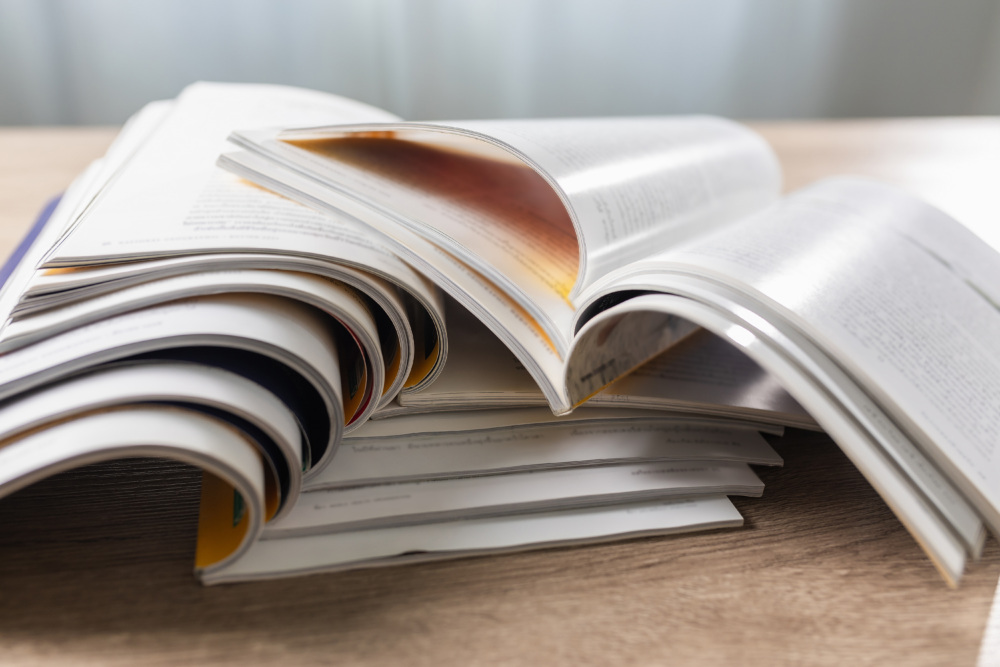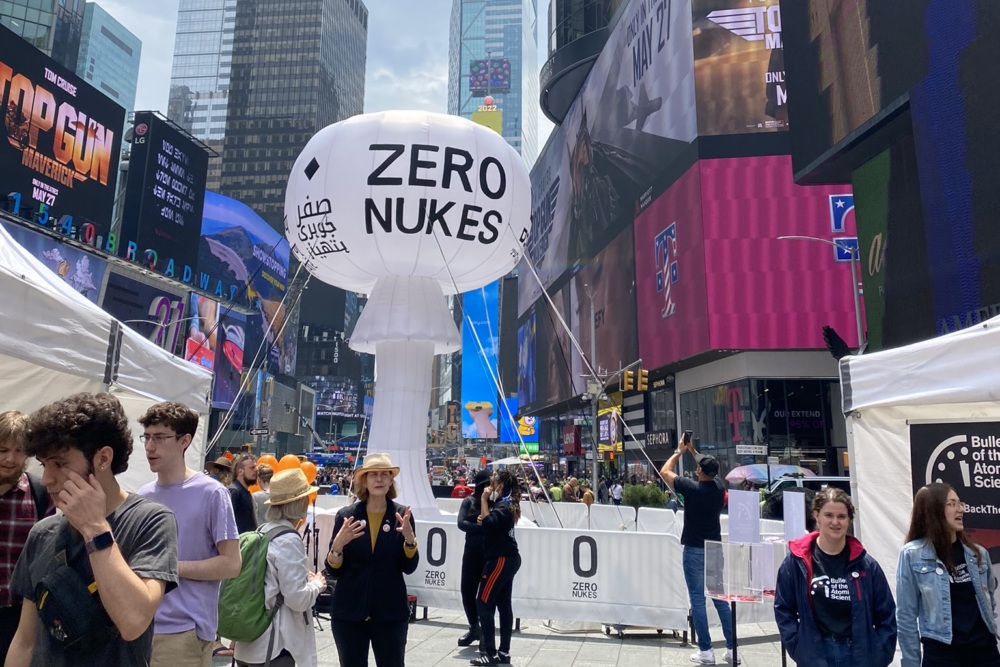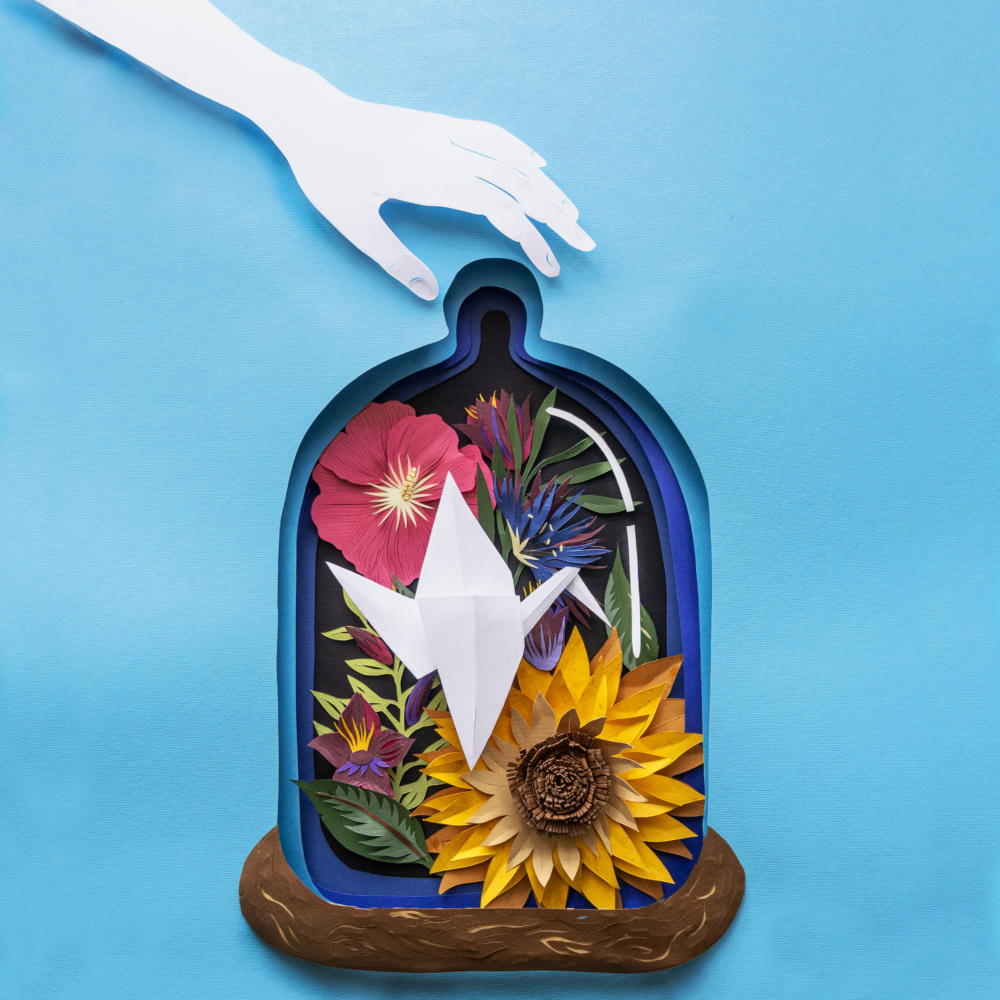
Ananya Agustin Malhotra
Program Officer, Global Nuclear Policy Program
Atomic Pulse
In Hiroshima’s Shukkeien Garden, overlooking the Kyobashi River, couples take wedding photos, children play, and people sit in quiet contemplation, appreciating the foliage of azaleas, maple trees, and cherry blossoms that surround the garden’s large koi pond today. In 1945, just one mile away, the United States detonated the “Little Boy” nuclear bomb in the world’s first nuclear attack and turned this garden into a nightmarish scene.
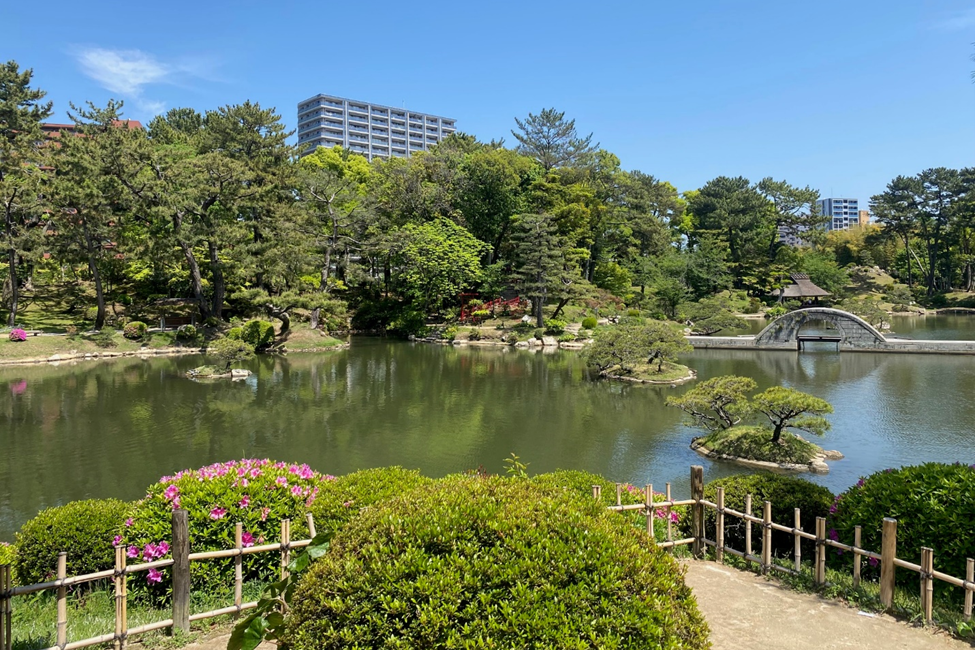
As John Hersey described in his 1946 account of the bombing, Hiroshima, the blast leveled the 400-year-old garden. Several hibakusha, or survivors, sought refuge there immediately following the detonation, only to die before receiving medical care. Today, their remains are interred in the garden and commemorated by a memorial bridge. The garden is also home to a more than 200-year-old giant Gingko tree that survived the blast, and with the garden, serves as a symbol of peace and resilience that connects the past and future.
Standing in the garden during my first visit to Hiroshima in April 2023, I felt the weight of history around me. From the steadfast Gingko tree to the powerful Memorial Peace Park, with its Flame of Peace that will burn until the last nuclear warhead is dismantled, Hiroshima’s history feels personal and political. The city insists that visitors confront the city’s past trauma, its promise of hope for the future, and its insistence on the urgency of the present. The memory of the bombing demands reflection on the unthinkable human trauma inflicted by nuclear weapons and the necessity of their abolition.
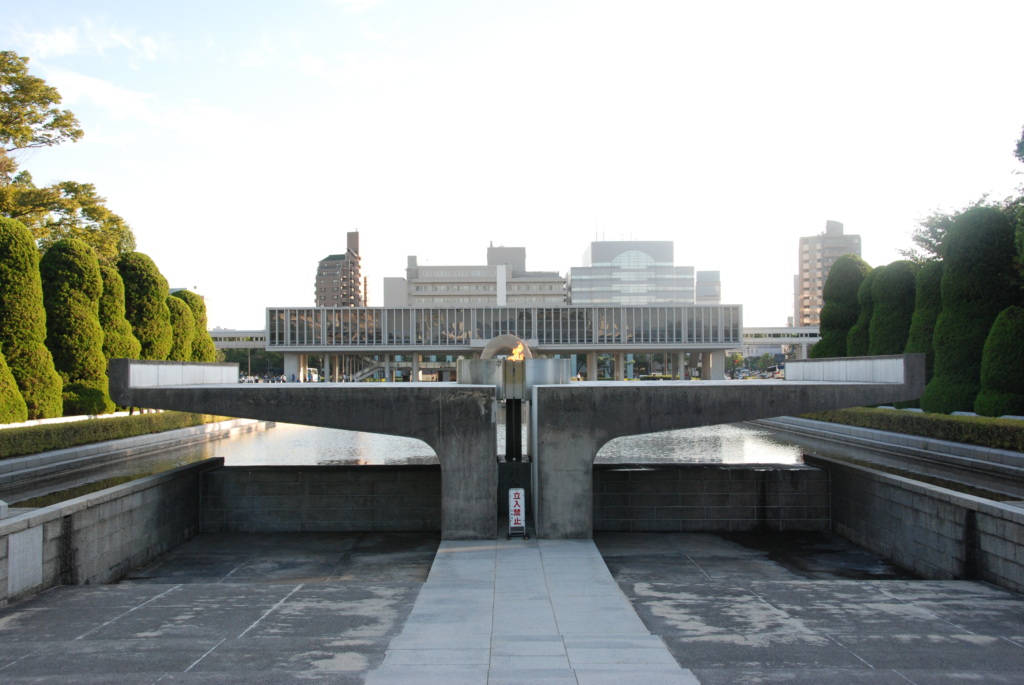
I was fortunate to visit Hiroshima at the invitation of Hiroshima Organization for Global Peace (HOPe) and the Belfer Center at Harvard Kennedy School’s Rethinking Nuclear Deterrence Research Network. They invited me to represent Horizon 2045—a collaborative project between NTI, N Square, and the Center for Complexity at the Rhode Island School of Design that seeks to reimagine global security without nuclear weapons—on a panel event related to the then-upcoming G7 summit in Hiroshima.
While I was there, the International Campaign to Abolish Nuclear Weapons was holding its Hiroshima G7 Youth Summit, which convened 50 young people from mostly G7 countries to visit Hiroshima, meet with survivors, and connect in advance of the G7 summit. I joined the Youth Summit’s visit to the Hiroshima Peace Memorial Museum and meeting with Keiko Ogura who survived the bombing of Hiroshima as an eight-year-old girl and who would be the sole hibakusha to meet with the G7 leaders at the summit a few weeks later.
It was deeply inspiring to meet Ms. Ogura and hear her testimony of the horrors faced by hibakusha. She described the unique intergenerational pain caused by nuclear weapons, including the “invisible scars” that survivors carry: fearing their exposure to ionizing radiation will result in health complications for their unborn children, experiencing survivor’s guilt because they couldn’t save their loved ones, and feeling obligated to speak out against nuclear weapons but finding it painful to confront their traumatic memories.
Ms. Ogura asked us to use our imagination, memory, and empathy to better grasp what it felt like for the hibakusha and their loved ones to undergo the unspeakable horrors of a nuclear attack. “I saw the fire. People were dying every day. Not one survivor can forget the voices crying out, ‘Mama, help me,’ and asking for water,” she said. Yoshito Matsushige, the Japanese photojournalist and hibakusha who captured the only five photographs taken on the day of the blast, described a similarly horrific scene:
Miyuki Bridge was covered with severely burned people.
I held the camera up, but I couldn’t snap the shutter.
…
The scene through my viewfinder was blurred by tears that streamed down my cheeks.
This was hell.
Matsushige’s photos are on display at Hiroshima’s Peace Memorial Museum, along with many drawings and testimonies that depict the horrors of the attack. Exploring the museum, I felt like a time-traveler with a harrowing sense of despair, knowing it would be a while before I could fully process all I was witnessing. Some of the most poignant artifacts I saw were the burnt remains of everyday tokens found from the rubble: a school child’s lunchbox, a distorted tricycle, the uniform of a small boy. Seeing them, I recalled how Ms. Ogura had pleaded, “Please imagine who was wearing these clothes, who was going to eat that lunch burned alive which one’s mother had made.”
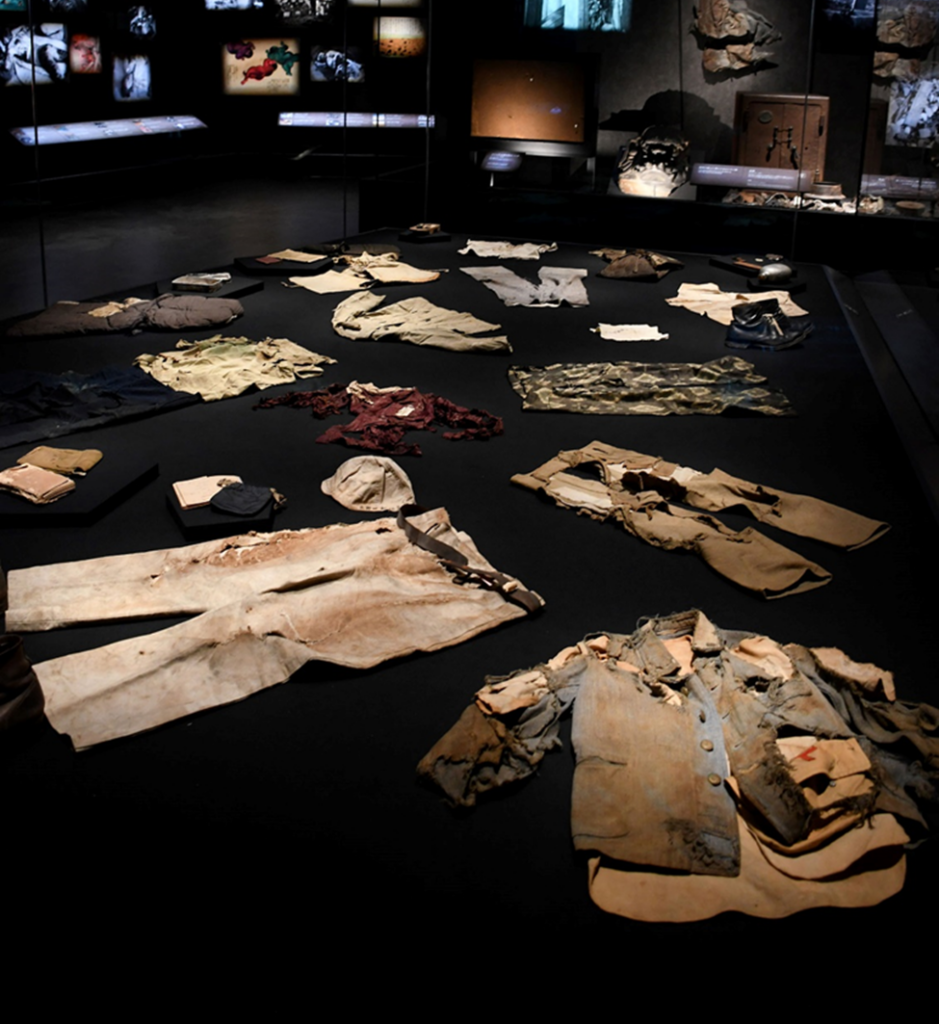
One exhibit described how the Truman administration selected Hiroshima as the target of the atomic bomb: they sought a large urban area of more than three miles in diameter that would be damaged “effectively” by a blast, and, ideally, hold “psychological” importance for the Japanese people. In May 1945, the administration decided that the bomb should be used “on a war plant surrounded by workers’ homes, and that it should be used without prior warning.” Reading these documents, I was struck by the sense that the story of the bombing presented in U.S. history books is more focused on the policymakers than the innocent humans who faced the consequences of their decisions.
Having spent a few days experiencing Hiroshima, I felt it was important that my remarks at the HOPe panel on “Rethinking Nuclear Deterrence: Approaches for Moving Beyond” address the fading understanding of the horrors of nuclear weapons, especially among younger people. Repairing this growing gap in our collective memory requires new discourses—in education, popular culture, and policy—that educate and empower young people to see the decades-old nuclear dilemma as intertwined with the issues that matter to them: environmental justice, racial and social justice, and public health. In constructing discourses that will resonate with the next generation, we should take seriously the power of art to convey stories in ways that statistics, academic publications, and policy memos cannot. By hearing, appreciating, and amplifying the stories and art of those who have survived nuclear weapons, we can begin to imagine a world where those weapons no longer exist.

Visiting Hiroshima imparted to me a deep sense of responsibility as well as a renewed energy to work towards a world without nuclear weapons. I was in awe of the spirit and dedication of those from the global nuclear disarmament community who traveled to Hiroshima from around the world, and it was humbling to be in the presence of those most directly affected by nuclear weapons policy decisions. Following my remarks, I was touched to receive support and kind words from several colleagues and attendees of the event, including some hibakusha. Their words of encouragement will stay with me forever.
Now, back in the United States, as a young person working in the nuclear policy community, I am committed to carrying forward the memories and lived experiences of families in Hiroshima and Nagasaki and to bringing a strong sense of moral conviction to my work in nuclear policy. It is more important than ever to galvanize a new generation towards the cause of a world without nuclear weapons.
Sign up for our newsletter to get the latest on nuclear and biological threats.
If you want to learn more about Oppenheimer’s bomb and what we must do to protect the world today and for future generations, NTI’s online library is the perfect place to go.
From May 17-24, 2022, Times Square Arts presented Amnesia Atómica NYC, a public exposition commissioned by the Bulletin of Atomic Scientists centered around artist Pedro Reyes’s ZERO NUKES: a 30 foot tall, mushroom cloud-shaped inflatable sculpture.
Eugenia Zoloto is a Ukrainian artist who specializes in paper cutting, collages, and illustrations, in addition to working with oil paints and mixed mediums. She lives in Kyiv with her husband and two children and is participating in the 2023 #CranesForOurFuture campaign by contributing a beautiful floral sculpture featuring an origami crane.
